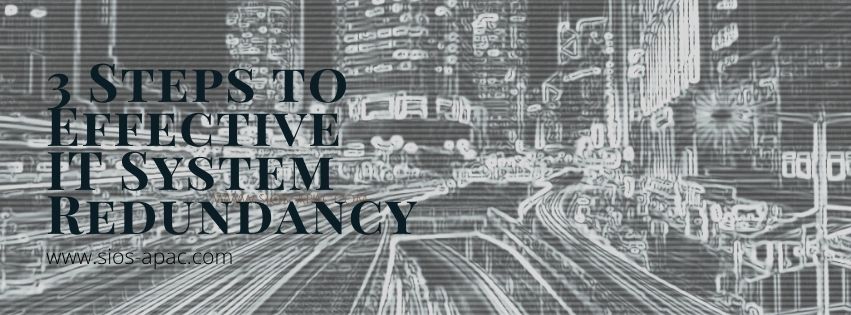Date: September 5, 2021
Tags: Redundancy
3 Steps to Effective IT System Redundancy
In some industries duplicate tasks can be a waste of company resources and could introduce unintended human error and loss of time. But in the IT world of managing systems and data, the duplication process referred to as “redundancy” is critical to the continued success of your organization.
1. Protect Both Your Devices and Software with Redundancy Tools
IT tools that provide redundancy ensure your system and software assets are protected from loss or corruption. They should also provide for a timely recovery to restore interruptions of your business.
Redundancy in IT systems means having the ability to duplicate your system components, whether on hardware, VMs, or the cloud. At the user level, a simple example is making a copy of the user’s PC system and storing it on another PC as a spare in case the user’s PC fails.
This same concept can be applied to any other computer component, including servers, storage devices, and networking equipment. For example, “mirroring” is the mechanism for writing the same data to multiple disks, making those disks redundant.
Redundancy enables you to recover from a device failure by switching to a spare device as soon as possible. Businesses rely heavily on their IT systems, and a service outage caused by a system failure can cause considerable downtime of operations. As a result, redundancy is indispensable for the IT system to remain resilient to failure and reduce the risk of business interruption. Depending on your organization’s size and geographical locations, this could be difficult, time-consuming, and costly.
2. Keep All Data Current and Synchronized with Clustering
Having redundant devices with the same specifications and environment (operating system and software) does not automatically safeguard the loss of user files and emails, and mission-critical application data when there is a failure. This is true for not only an individual user’s PC but also the larger enterprise scale, across multiple servers and storage devices. Failure of a data storage device could render your business operations to significant delays without access to the latest data. For large applications like SQL Server, Oracle, or SAP, recovery time could be significant.
Unfortunately, many companies believe their risk is reduced by simply backing up their data. However, until a production device suddenly fails, most people do not realize how difficult it is to actually restore the data to a standby device from the backup copy.
In stark contrast, with a standby device that already has the ability to use the same data that was on the failed production device, all you have to do is start up the standby machine and switch to it. The recovery work will be much easier. This is possible with a High Availability (HA) cluster system.
Clustering helps improve reliability and performance of software and hardware systems by creating redundancy to compensate for unforeseen system failure. The HA cluster system consists of redundant servers in the active and standby systems and external storage (e.g., shared disk) that both servers can access. In the unlikely event that the operating server fails, by switching to the standby server, the service can be continued with the combination of the standby server and the external storage containing the latest data.
By the way, the same function can be achieved with “replication“, which synchronizes data between disks inside the server in real time. Replication is also an excellent measure against Disaster Recovery because it does not require the installation of expensive external storage and keeps the latest data on both instances. Depending on the location of the secondary instance, data is either synchronously or asynchronously replicated. Be aware that how the data is replicated impacts Recovery Time Objectives (RTOs) and Recovery Point Objectives (RPO).
3. Automate Failover
Whether you utilize an HA cluster system or replication, the best practice is to avoid manual switch-over of your server when a failure occurs. Instead, automate the process so that it is performed without delay in a process called failover. Configuring an automated failover of the HA cluster system / replication minimizes downtime as much as possible and reduces human error.
SIOS SAN-based and SANLess clustering solutions provide high availability and disaster recovery for mission-critical applications in physical, virtual, cloud or hybrid cloud environments. For further information, refer to our Windows and Linux high availability products.
Reproduced from SIOS
